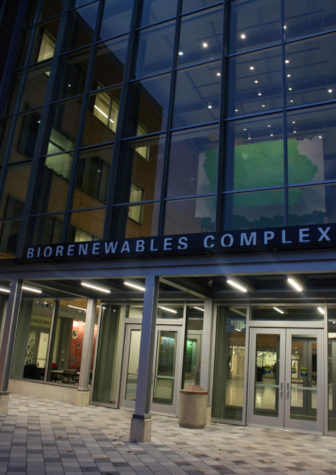ISU power plant proposes boiler renovation
October 12, 2012
The ISU power plant, a site of much student controversy regarding its use of coal, is undergoing processes to propose greener energy renovations.
The power plant has to operate according to Environmental Protection Agency standards, which have usually involved cutting down emissions, particulates and coal consumption.
Since 2004 the Environmental Protection Agency, however, has been trying to issue new, stricter regulations. These regulations are not final yet but will be soon after the election.
One such revision is the Maximum Achievable Control Technology ruling, which would require the power plant to update its boiler technology to meet more rigid environmental regulations.
Currently, the power plant has five boilers. The newest two are fluidized circulating-bed boilers that burn coal with limestone. The limestone reacts with the coal to produce calcium sulfate in an ash form, removing more than 90 percent of the sulfur from the coal. These boilers also reduce combustion temperatures and nitrogen oxide emissions.
The remaining three can operate on both coal and natural gas. Jeff Witt, director of the utilities enterprise of Facilities Planning and Management, said Iowa State underwent studies last year for options to comply with the new regulations. They decided to replace the three oldest boilers with gas-fired ones to meet the new standards. The newest two fluidized circulating-bed boilers would remain on a coal and limestone mixture. However, by keeping them on coal, it enables Iowa State to experiment with biomass, which is not able to burn in a gas boiler.
“Our opinion is by having fuel flexibility, we can minimize utility costs,” Witt said.
Since news of the new EPA regulations, student group ActivUS, a group devoted to phasing out Iowa State’s use of coal, has worked with Robert Brown, distinguished professor at the Center for Sustainable Environmental Technology, to develop biomass technology.
Brown’s research group is experimenting with pellets of made from a mixture of biomass, coal and biomass-derived oil that burn similarly to coal. The benefits of this research are that the boilers would not need to be changed to burn the pellets and the emissions of greenhouse gases and heavy metals would be greatly reduced.
“Coal puts more carbon dioxide into the atmosphere than all other energy forms and, from a health perspective; the articulate matter it gives off is bad for breathing,” said Rivka Fidel, graduate student in agronomy and president of ActivUS. “We believe it is necessary to protect the student population from this effect.”
The power plant, located along Beach Road, operates through the use of cogeneration — the simultaneous production of heat, cooling and electricity. The power plant burns coal, creating steam. This steam spins turbines to generate electricity and the steam is then recycled through underground pipelines to heat buildings on campus.
In the warmer months, the steam is sent to the chillers to produce chilled water, which is sent through the pipelines to offset the heat from campus buildings. In this way, Iowa State is able to supply 20 percent of its electricity needs and 100 percent of its thermal needs. The remaining electricity is either produced at the power plant by traditional methods or purchased from other sources.
Ultimately, ActivUS would like the ISU power plant to cease coal use, but, Fidel said, they see natural gas use and biomass experimentation as a good transition in the meantime.
With the finalization of the preliminary design for the new boilers under way, Witt is hoping to get it approved by the Board of Regents by early winter. From there renovation would begin in summer 2013 and not be finished until 2015. Until then, biomass research will continue in hopes of weaning Iowa State off its coal dependency.









